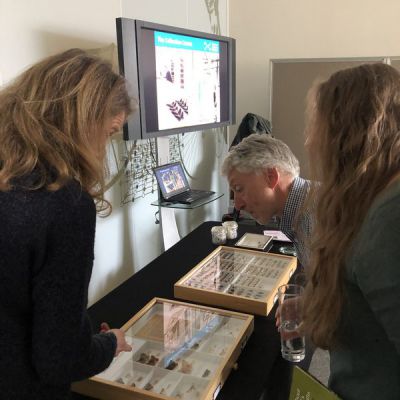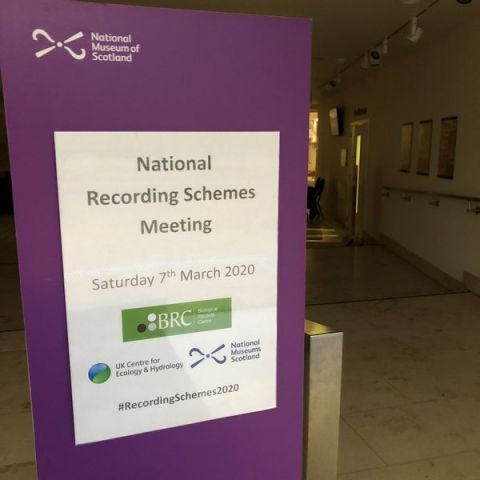BRC national recording schemes meeting 2020
The 2020 BRC recording schemes meeting took place on 7 March at a new location and indeed a new country for this meeting! We are most grateful to the National Museum of Scotland in Edinburgh for hosting us, and in particular to Ashleigh Whiffin and her colleagues for providing lots of support to set up the event and help ensure that it ran smoothly on the day.
Around 100 people attended, representing recording schemes, wildlife groups, government agencies and research organisations to discuss areas of common interest. A theme of the meeting was how biological recording can help assess the condition of sites and habitats.
Demonstrations and posters were available during the breaks, covering topics such as the use of biological records for understanding our changing environment, tools for supporting recording schemes and how recording schemes can initiate and adapt to innovations.
Where available, presentations from the day can be downloaded using the links below.
- [Programme for the day]
- David Roy (@DavidRoyBRC / UKCEH) Welcome – aims of the day and a general update on BRC
- Nick Isaac (@drnickisaac / UKCEH) Monitoring ecosystem health using biological records data
- April Windle (@aprilwindle / Cumbria Lichen & Bryophyte Group) – Recording lichens
- Tom Prescott (Butterfly Conservation / @BC_Scotland) – Moths in Scotland
- Chris Cathrine (@chriscathrine / Caledonian Conservation Ltd / @CalConLtd) – Using existing datasets to inform site condition monitoring at Sites of Special Scientific Interest in Scotland
- Ashleigh Whiffin (@AshWhiffin / National Museum of Scotland / @NtlMuseumsScot) – The role of museums in biological recording
- Michael Pocock (@mjopocock / UKCEH) – Gaps in biological recording for measuring species trends
- Iain MacDonald (Scottish Natural Heritage / @nature_scot) – Monitoring plants in Scotland
- Garth Foster (Balfour-Browne Club / Aquatic Coleoptera Conservation Trust) – Water beetles outside the box
- Sarah Henshall (@sarahhenshall / Rare Invertebrates in the Cairngorms / @RareInverts6)– Conserving rare species in the Cairngorms National Park
- Katty Baird (@kattyponder / NMS volunteer) – Using NMS's moth collection to inspire a modern-day moth recording project

The following projects and organisations were represented during the poster/demo sessions.
- Auchenorrhyncha Recording Scheme
- Bloomin’ Algae
- Botanical Society of Britain and Ireland
- British Phycological Society
- Conchological Society
- Grasshopper Recording Scheme
- Jamie Weir (@Jamie_C_Weir / University of Edinburgh): a trap for flightless moths
- MammalWeb
- National Bat Monitoring Programme
- National Plant Monitoring Scheme
- Plantlife Scotland
- Royal Botanic Garden Edinburgh
- Scottish Biodiversity Information Forum (@SB_Info_Forum)
- Scottish Wildlife Trust
- Silphidae Recording Scheme
- UK Ladybird Survey
- UK Pollinator Monitoring Scheme
- iRecord and the iRecord app

This article was published in the BRC Newsletter June 2020.
